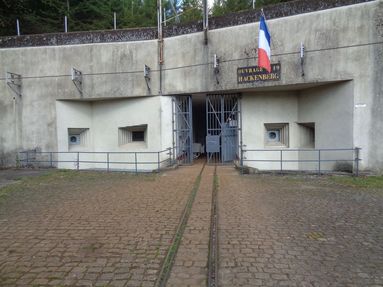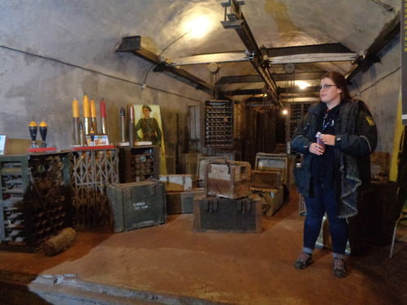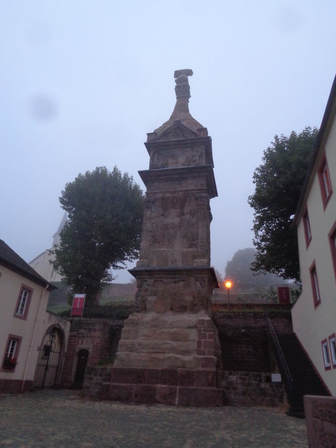|
One of the more interesting stops on World War 2’s Western Front is the Hackenberg in Veckring, France. Hidden under wooded hilltops of the Moselle River Valley, it was part of the Maginot Line in Lorraine. After the Great War (World War 1), France worried about a future war against Germany, and wanted to make sure that it could delay any future invasion force long enough for French forces to mobilize and counterattack. The Hackenberg, one of many such installations, was constructed on the French side of its borders with Italy, Switzerland, Germany, and Luxemburg.  The Maginot Line The Hackenberg was the largest fortress and bunker on the line with nineteen combat blocks which had two levels, one for artillery and the other to accommodate the troops, and over six miles of underground tunnels. Held by the Germans during much of World War 2, it was later recaptured by the Allies. The fortress provides a first-hand look at French military engineering at the time, and the conditions in which the French troops lived and operated underground. It includes a large World War 2 museum. Preservation on the fortress began in 1975. The tour starts at the main ammunition entrance. The original installations and infrastructure are in perfect working order, including an electrical plant and generators that are still operational. Living and work spaces have been renovated to their original conditions. The bunker had state-of-the-art living conditions for the troops, including air conditioning and eating areas.  On our walk to the next block, we see one of the 135 mm guns that once defended nearby valleys. We also hear the story of how the US Army under General Patton captured the fort from the Germans in November 1944. Block 8 still bears the marks of the intense fighting of 1944 between the German and American troops. Hackenberg is one of the few military fortifications that has a marked pedestrian trail above it. From there, we can appreciate the tops of the 19 infantry and artillery blocks as well as the 800-meter-long and 8-meter-tall anti-tank walls. The Maginot Line was nearly invincible to aerial bombings and tank fire and had underground railways as a backup. We take a mile-long ride on one of these narrow-gauged, underground railways to Block 9 to see a gun turret in action. We eventually move outside the fort to see the turret in action. We eventually move outside the fort to see the turrets.  Earlier Roman Invasions We spend the night in the small village of Igel, a municipality in the Trier-Saarburg district, in Rhineland-Palatinate, Germany. Igel is known for the Igel column, a 98-foot high Roman-decorated tomb that is part of the UNESCO World Heritage Site surrounding Trier. Made of Roman sandstone, the column dates to 250 A.D., and is the burial monument of the Secundinii cloth merchant family. The bas-reliefs on the sculptured frieze feature a procession of six men bringing donations to the house of their master. It is designated as part of the Roman Monuments. The area is also known for its wines, and several small stores with offerings surround our hotel. But it’s late and time for some rest. Sources for the Hackenberg : https://en.wikipedia.org/wiki/Ouvrage_Hackenberg http://www.moselle-tourism.com/en/visiting/culture-and-history/F846140032_hackenberg-maginot-fort-veckring.html Next time: The American Cemetery, General Patton, and the “Battle of the Bulge"
Email Ann your WW2 stories at [email protected] Ann Otto writes fiction based on documented and oral history. Her debut novel, Yours in a Hurry, about Ohio siblings and their journeys and struggles relocating to California in the 1910’s, is available online at Amazon, Barnes and Noble, Kindle, and locations listed on her website at www.ann-otto.com. Ann’s academic background is in history, English, and behavioral science, and she has published in academic and professional journals. She loves speaking with groups about history, writing, and the events, locations, and characters from Yours in a Hurry. She is currently working on her next novel, Little Diamonds, about Ohio’s Appalachia in the 1920’s. She can be reached through the website, on Facebook @Annottoauthor, or www.Goodreads.com.
0 Comments
Leave a Reply. |
Archives
August 2020
Categories
All
|
 RSS Feed
RSS Feed